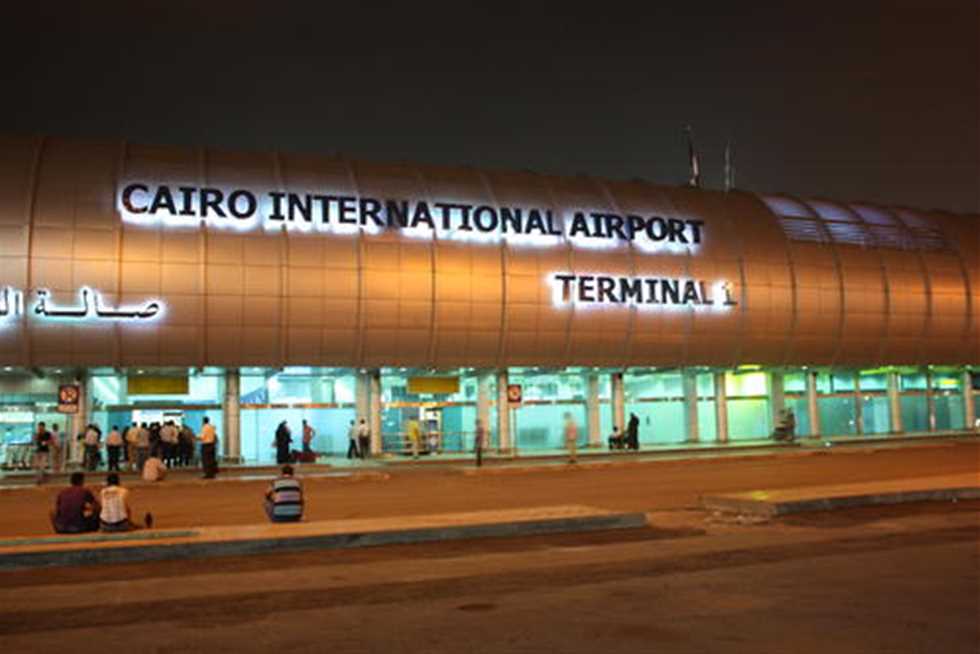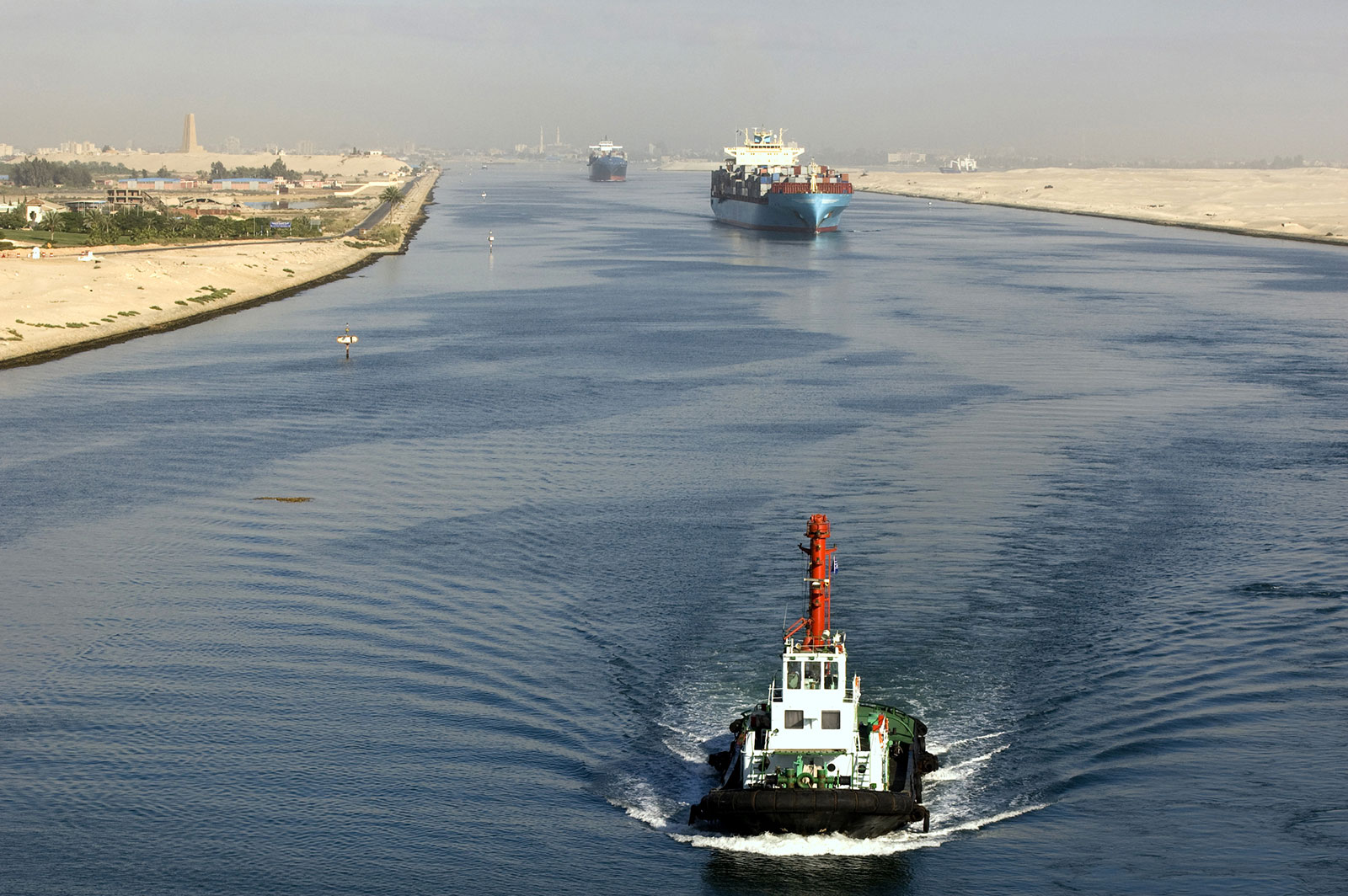
At least 74 percent of Egyptians believe that New Suez Canal project will have a positive impact on their lives and their families, while 13 percent do not believe that will happen and 4 percent said the project will have moderate results, the Egyptian Center for Public Opinion Research (Baseera) reported.
Controversy has surrounded the new project and the big question people have asked is, "Is the $8 billion-project needed"? This was especially true in light of the recent intermittent political fluctuations the country has experienced, as well as the economic struggles it is facing.
With a historical grand opening, the project was strongly and clearly hailed by many of the regime's supporters and economic analysts who consider the canal Egypt’s "gift to the world".
The Suez Canal Authority (SCA) chairman, Mohab Mamish says this project will bring about a 259 percent increase in Suez Canal revenues which will in turn boost the Egyptian economy.
What is the project and what is the goal?
The new canal extends 35 km and is parallel to the old 93 km one. The project also included the deepening and widening of the Great Bitter Lakes’ by-passes, as well as the Ballah by-pass, which both add up to a further 37 km. The new project has yielded 72 km of waterway that can be used in conjunction with the old Suez Canal.
According to Mamish, the project aims to double the longest possible parts of the waterway to facilitate traffic in both directions by 50 percent while minimizing the waiting time for transiting ships. The daily average of transiting vessels will rise to 97 ships by the year 2023, up from 49 ships presently.
Bloomberg reported that the Napoli-based economic research center SRM estimates shorter transit may save up to 4 percent of journey costs depending on the length of the trip.
Six other expansions, equaling 80.5 km, were already built on the Suez Canal over the last 60 years. Three of them were drilled in 1955, including the Al-Balah expansion (9 km), the Lakes expansion (12 km) and the Kebrit expansion (7 km).
In 1980, three other expansions were drilled, including Al Temsah (4 km), Deversoir (8.5 km) and Port Said (40 km).
Is the Suez Canal at its full capacity?
The SCA has mentioned on its website that the old canal can accommodate 81 vessels per day. In 2011, however, former SCA board member Wael Kodour reported that the Canal’s absorptive capacity is 98 vessels per day. The average daily number of ships passing through in 2009, however, was 49 ships.
Bloomberg, on the other hand, elaborated that the number of vessels passing through the canal is around 20 percent of capacity, only 2 percent higher than a decade ago, citing a recent decline global trade growth, according to analysts.
In 2014, the popular front of the Suez Canal Corridor Development (SCCD) announced that the canal would allow ships at a depth of 66 feet to pass. While 98 percent of the bulk cargos of world trade vessels cross the canal, 2 percent passes through other waterways in China and Brazil.
The canal accommodates 62 percent of the world's navy oil cargos, while 38 percent pass with lighter loads through the Sumid pipelines. Accordingly, the popular front believes that the canal accommodates more than 90 percent of the world's navy.
The front said the number of cargos depends largely on the world trade growth. Currently there is a global trade crisis and a clear decline in its volume. According to the latest reports issued in 2012, the volume of world trade in 2020 is expected to increase by 50 percent compared to 2012.
"It means if the number of cargos jumps from 50 to 75 in 2020, the old Suez Canal technically can absorb it without an urgent need for a new project," said Walid Khairy an urban engineering expert.
Data from the International Monetary Fund, meanwhile, expects global trade growth to average 3.4 percent in 2007-2016, compared with 7 percent over the previous decade.
Michelle Berman, the head of operational risk at BMI Research, a unit of Fitch Group, told Bloomberg that speed is not the issue for container shipping, but rather that there are more ships relative to demand. Exacerbating the problem are larger and larger vessels that are continually being for the Asia-Europe route, she said.
The public front of the SCCD also pointed out that the United States has been moving towards more self sufficiency in its energy sector, reducing the need for large shipments of oil.
Moreover, due to changes that have taken place in world trade demands, especially with the Asian need to fuel in wake of the shortage of oil supply from the Gulf nations to Asia, the Suez Canal enables ships to cross from Asia to Europe and from Asia to the eastern coast of the US.
Was the project really important in the meantime?
A Bloomberg report says there is no real evidence of a pressing need for the new Suez Canal, especially as shipping has yet to recover from the 2008 global financial crisis that hammered shipping indices.
“The canal saves distance and time from using other routes which would always make the canal attractive,” Neil Atkinson, the head of analysis at Lloyd’s List Intelligence, told Bloomberg.
Echoing Atkinson, Khairy believes that waiting 18 hours is a much better than the alternative, which is the Cape of Good Hope route. There, ships can wait over 15 days to cross.
In 2005, responding to a question by the state owned newspaper Al-Ahram on why the Suez Canal authority was not interested in increasing the Canal’s traffic duality, former SCA chairman, lieutenant general Ahmed Ali Fadel, said “Duality can’t be implemented out of emotions, but rather is imposed by the necessities in a timely manner and needs a study to ensure its economic feasibility and impact.
"It’s nonsense that I start a project without ensuring its real need. Besides, technically the research says that such a project will be worthless, especially since the traffic in the canal is expecting to absorb all types of vessels in all sizes in the coming 100 years, apart from a few oil cargos," Fadel said.
“Without exaggeration the new project is not a canal and it is not new. On the other hand, it’s not a washtub as some claimed,” said Soliman AlHakim in an article for Al-Masry Al-Youm.
AlHakim explained that the new project is a fourth by-pass, three of which were already drilled during Hosni Mubarak’s regime without popular mobilizations. Exaggeration in the media, or expensive ceremonies that cost the state budget large amounts of money could have been directed, instead, to other more worthy causes, he said.
“The economic revenue of the new drilling would be much less than the money that has been spent on the ceremony, especially considering that the average number of vessels passing daily through the canal is 48, which means that the Canal is working with half of its absorptive capacity (98 ships per day),” AlHakim said.
“Throughout the canal’s history it has not reached its full capacity. The maximum it has reached was 78 vessels per day, so I don’t think we were in need of this new project,” he added.
Can the project drastically increase revenues?
One of the main targets of the projects is to increase the Suez Canal’s revenues: from US$5.3 billion at present, to $13.226 billion in 2023, which would be an increase of 259 percent that would positively contribute to Egypt’s national income of hard currencies.
According to the SCA, revenues continued to fall in June for the fourth consecutive month, reaching $431.6 million, compared to $443.9 million in June of last year.
The canal's revenues declined by 4 percent during the period of March to June 2015, compared to the same period last year. However, the canal's revenues inched 0.07 up to reach $5.37 billion in the 2014/2015 fiscal year, compared to the previous fiscal year.
The revenues from Egypt's Suez Canal are one of the country's main sources of foreign currency.
"The drilling of 35 km will raise the revenues of 93-long canal three times, for the first glance this is not logic, based on the expectations of the global trade volume which will increase by 50 percent, about 75 will cross the canal which means the revenues will be 2.5 billion but if they increased the fees the revenues will jump to 3.5 billion".
Khairy says that the worst thing for Egyptians in the current period is that they cannot distinguish between exaggeration and underestimation. "It’s not right to either underestimate or overrate the project of the new canal, as some believe it's a worthless lake and others say it will lead Egypt to become the greatest of powers.”
He argued that the government should publish the validity studies to the public in order to guarantee the project’s credibility. "We have a critical problem in covering the investment certificates and their interest and the government should be as frank as possible," he said.
“‘Build it and they will come’ is not enough,” said Simon Kitchen, a strategist with the Cairo-based investment bank EFG-Hermes, to Bloomberg. He believes that companies will require incentives to build factories and other facilities. “The government needs to give ships a reason to sail through the canal,” he said.
The Suez Canal corridor development is the expected following up project with logistical services and the project includes six tunnels under the canal. SCA expects revenues to grow to more than $13 billion by 2023, up from $5.5 billion in 2014.
The project is expected to transform the waterway into a global integrated business center, with many services including ships repairing, refueling, towing services, rescue,paints, ships cleanliness, loading and unloading, as well as new industrial zones, along with complexes for packaging, centers for logistics.




